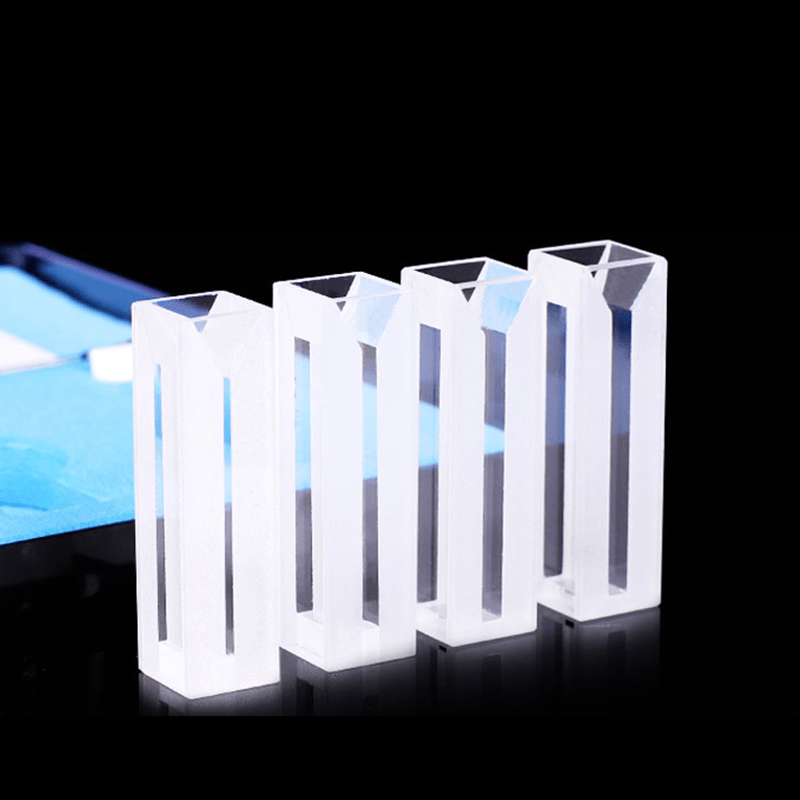Choosing the Proper Cuvette Size for Maximum Results
Choosing the Proper Cuvette Size for Maximum Results
Blog Article

The Benefits of Cuvettes and Quartz Vials in Clinical Study
In clinical research, the precision and reliability of sizes are paramount, especially in fields like spectroscopy, compound examination, and biology. One critical component that assures accuracy in these reports could be the cuvette, particularly quartz vials. Knowledge the advantages of cuvettes and the benefits of applying quartz vials can somewhat influence the results of studies and laboratory work.
Accuracy in Spectroscopy
Cuvettes are essential for keeping water samples in several logical tools, such as spectrophotometers. These units gauge the absorbance or indication of gentle through a sample, and the cuvette acts since the package for the sample during analysis. The size and substance of the cuvette perform an essential role in ensuring the accuracy of the measurements. Quartz vials, exclusively, present exemplary optical quality, allowing for correct mild transmission across a wide variety of wavelengths, including ultraviolet (UV) light. This makes quartz vials a great selection for spectroscopic studies, wherever precision is critical.
Longevity and Substance Weight
Quartz vials stand out for their toughness and resistance to harsh chemicals. Unlike plastic cuvettes, quartz vials are less inclined to degrade or respond with substances in the taste, ensuring that the outcomes of the try remain unaffected by possible contamination. This characteristic makes quartz vials especially helpful in surroundings where aggressive solvents or high conditions are involved. Their power to tolerate extreme conditions without limiting the integrity of the sample is one of the principal factors they're favored in many laboratory applications.
Reliability in Measurement and Shape
How big is a cuvette is not a one-size-fits-all situation. The aspect of the cuvette, such as for instance their route size, influences the volume of the taste and the amount of mild that passes through. Selecting the right cuvette size for the specific test ensures that the results are maybe not skewed due to under or over-concentration of the sample. Quartz vials come in a number of dimensions and shapes, letting researchers to select the absolute most suitable selection based on the demands of their experiment. This freedom plays a part in more correct knowledge and permits better control over fresh conditions.
Transparency and Gentle Sign
Quartz is known for their excellent transparency, especially in the ultraviolet (UV) and obvious light spectra. That makes quartz vials suitable for use within tools that require apparent optical routes, such as for example UV-Vis spectrophotometers. The remarkable light sign properties of quartz make sure that the gentle passes through the trial with minimal scattering or absorption, resulting in more correct readings. For tests that demand large precision, quartz vials provide a distinct benefit over other materials.
Long-Term Consistency
When working in study laboratories, it is crucial to own trusted resources that keep their strength over time. Quartz vials are not just chemically immune but in addition very tough, meaning they're less likely to knowledge use and tear. This long-term stability ensures that analysts can use quartz vials for extensive periods without worrying about deterioration or the necessity for regular alternatives, adding to cost-effectiveness in the extended run.
In conclusion, equally cuvettes and quartz vials present a selection of benefits that improve the product quality and precision of lab experiments. From their remarkable visual understanding with their substance opposition and toughness, these tools are indispensable in medical research. By choosing the proper cuvette size and utilizing quartz vials, analysts can assure precise dimensions and achieve more trusted results inside their studies. Report this page